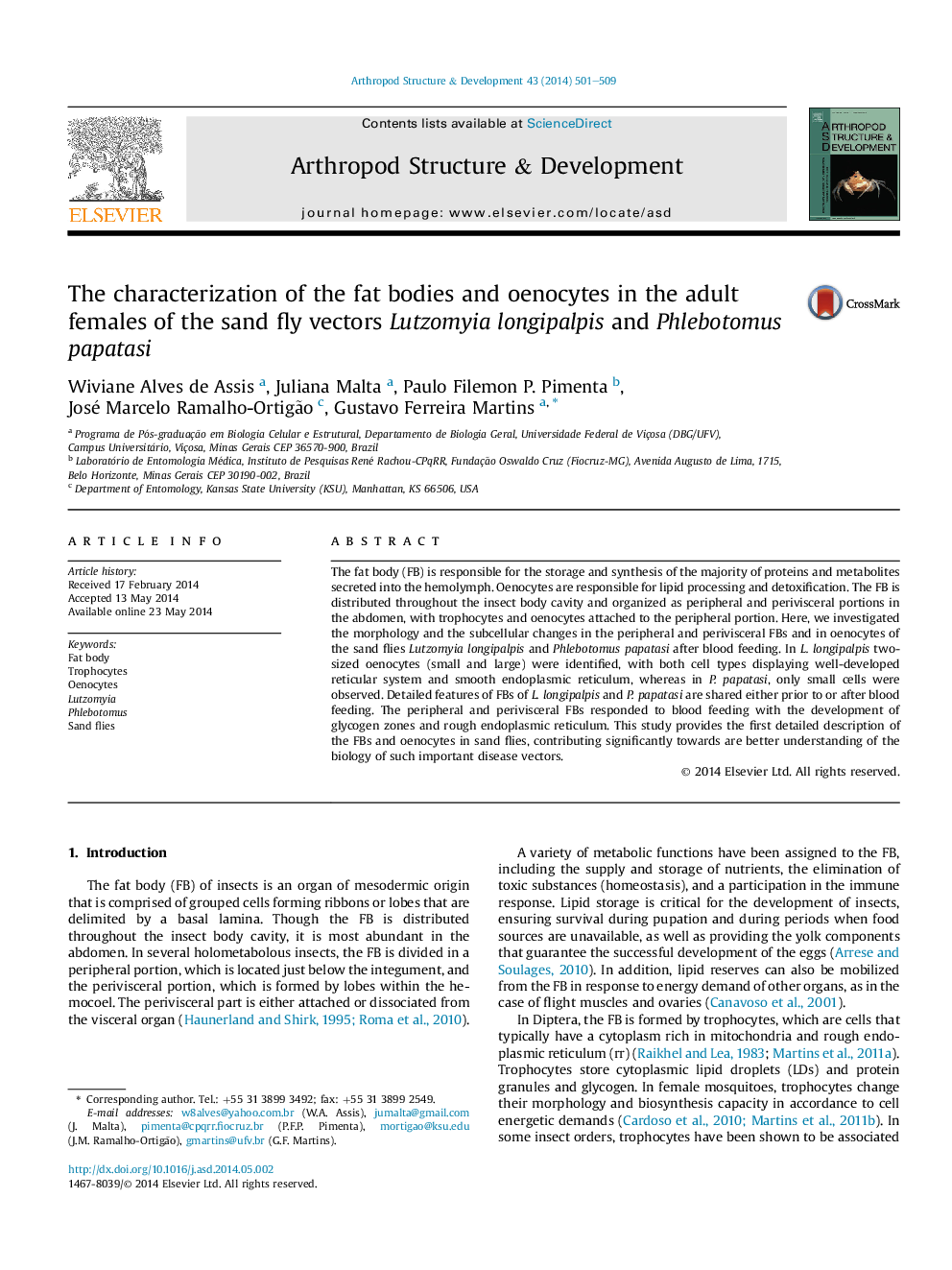| کد مقاله | کد نشریه | سال انتشار | مقاله انگلیسی | نسخه تمام متن |
|---|---|---|---|---|
| 5888704 | 1153145 | 2014 | 9 صفحه PDF | دانلود رایگان |

- The abdominal fat body of sand flies is organized as peripheral and perivisceral.
- Oenocytes are attached to the peripheral portion of the fat bodies of sand flies.
- In Lutzomyia longipalpis there are two-sized oenocytes (small and large cells).
- Trophocytes of sand flies changed their ultrastructure after a blood meal.
The fat body (FB) is responsible for the storage and synthesis of the majority of proteins and metabolites secreted into the hemolymph. Oenocytes are responsible for lipid processing and detoxification. The FB is distributed throughout the insect body cavity and organized as peripheral and perivisceral portions in the abdomen, with trophocytes and oenocytes attached to the peripheral portion. Here, we investigated the morphology and the subcellular changes in the peripheral and perivisceral FBs and in oenocytes of the sand flies Lutzomyia longipalpis and Phlebotomus papatasi after blood feeding. In L. longipalpis two-sized oenocytes (small and large) were identified, with both cell types displaying well-developed reticular system and smooth endoplasmic reticulum, whereas in P. papatasi, only small cells were observed. Detailed features of FBs of L. longipalpis and P. papatasi are shared either prior to or after blood feeding. The peripheral and perivisceral FBs responded to blood feeding with the development of glycogen zones and rough endoplasmic reticulum. This study provides the first detailed description of the FBs and oenocytes in sand flies, contributing significantly towards are better understanding of the biology of such important disease vectors.
Journal: Arthropod Structure & Development - Volume 43, Issue 5, September 2014, Pages 501-509